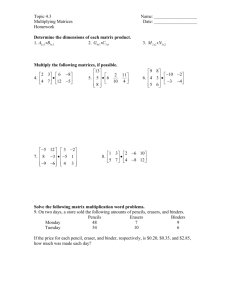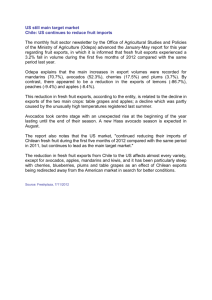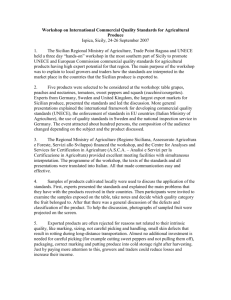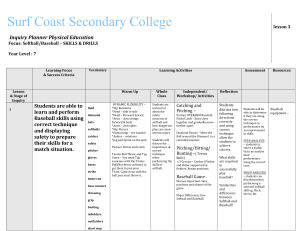Matrix Multiplication: Examples & Applications
advertisement
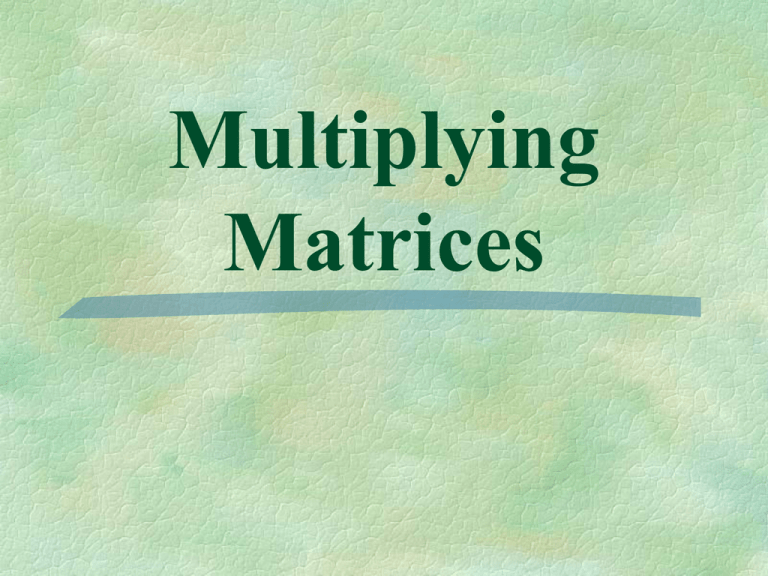
Multiplying Matrices Review: Scalar Multiplication 1. 27 1 0 -14 2 0 -8 0 2 0 2. 4 16 -20 4 5 1 2 3 3. 54 5 6 7 8 9 -5 -10 15 -20 25 -30 35 -40 45 **You can only multiply two matrices if the number of columns in the 1st matrix is equal to the number of rows in the 2nd matrix. 8 2 3 2 5 7 1 0 1 5 0 3 They must match. Dimensions: 2x3 3x2 The dimensions of your answer. Examples: 2 1 3 9 2 1. 3 4 5 7 6 2(3) + -1(5) 2(-9) + -1(7) 2(2) + -1(-6) 3(3) + 4(5) 3(-9) + 4(7) 3(2) + 4(-6) 1 25 10 29 1 18 3 9 2 2 1 2. 5 7 6 3 4 Dimensions: 2 x 3 2x2 *They don’t match so can’t be multiplied together.* 0 1 4 3 *Answer should be a 2 x 2 3. 1 0 2 5 2x2 2x2 0(4) + (-1)(-2) 0(-3) + (-1)(5) 1(4) + 0(-2) 1(-3) +0(5) 2 -5 4 -3 The Salem youth baseball and softball leagues charge the following registration fees: ages 7-8, $45; ages 9-10, $55; and ages 11-14, $65 1) Write a matrix for the registered fees and a matrix for the number of players. 2) Find the total amount of money the league received from baseball and softball registrations. Team Members Age Baseball Softball 7-8 350 280 9-10 320 165 11-14 180 120 Carmen Fox owns three fruit farms on which he grows apples, peaches, and apricots. He sells apples for $22 a case, peaches for $25 a case, and apricots for $18 a case. # of Cases in Stock of Each Type of Fruit Farm Apples Peaches Apricots 1 290 165 210 2 175 240 190 3 110 75 0 1) Write an inventory matrix for the number of cases for each type of fruit for each farm. 2) Write a cost matrix for the price per case for each type of fruit. 3) Find the total income of the three fruit farms expressed as a matrix. 4) What is the total income from all three fruit farms combined?
